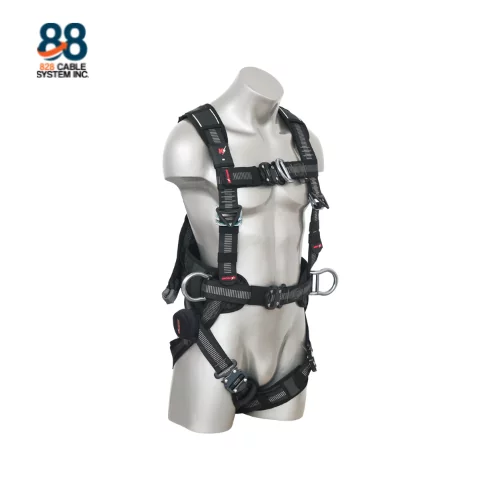Working at heights poses significant risks, making fall protection equipment indispensable. Among these, full-body harnesses stand out as a vital tool in preventing injuries and fatalities caused by falls. Understanding their function and proper usage is paramount for ensuring safety in various industries.
Evolution of Fall Protection Equipment
In the past, body belts were commonly used for fall protection. However, their effectiveness came into question due to their tendency to cause internal injuries. Consequently, full-body harnesses emerged as a safer alternative, leading to the ban of body belts in 1998. Harnesses offer superior support and distribute impact over a wider area, significantly reducing the risk of injury during falls.
Understanding Full-Body Harnesses
Full-body harnesses are designed to keep users suspended in an upright position after a fall, absorbing the impact to prevent suspension-related injuries. They consist of several components, including straps, buckles, and D-rings, which work together to secure the wearer and provide reliable fall arrest capabilities.
Regulations and Standards
To ensure the effectiveness of fall protection measures, regulatory bodies like the Occupational Safety and Health Administration (OSHA) have established strict guidelines regarding fall protection equipment. These regulations outline requirements for fall arrest systems, including parameters such as deceleration distance, maximum arresting force, and prevention of free falls.
Key Features and Considerations
When selecting a full-body harness, it’s crucial to consider various factors, including the type of work being performed and the specific requirements of the job site. Different industries may require specialized harnesses tailored to their unique needs, such as construction, industrial, or rescue harnesses. Additionally, harnesses must be capable of supporting the user’s weight and arresting falls safely.
Proper Usage and Maintenance
Proper fitting and adjustment of a full-body harness are essential for ensuring its effectiveness. Workers should undergo training to learn how to properly don and adjust their harnesses to ensure a secure fit. Regular inspection and maintenance are also critical to identify any signs of wear, tear, or damage that could compromise the harness’s integrity.
Training and Education
Employers have a responsibility to provide comprehensive training on fall protection equipment, including proper harness usage and inspection procedures. Training programs should cover essential topics such as harness fitting, fall arrest techniques, and emergency procedures. Certification courses are available to ensure workers are adequately trained and competent in using harnesses safely.
Takeaway
Full-body harnesses play a crucial role in ensuring safety at heights by providing reliable fall protection. By understanding their function, adhering to regulations, and prioritizing proper training and maintenance, workers can mitigate the risks associated with working at elevated levels. Investing in high-quality harnesses and comprehensive training programs is essential for safeguarding the well-being of workers in various industries.

